We had the opportunity to go on two day trips to Szentendre and Eger while with Babilon, and both were positively beautiful. It’s probably going to be hard to capture the magic of the quiet of these towns compared to Budapest’s hustle and bustle, but I’ll try.
Szentendre is a village to the north of Budapest that’s ridiculously easy to get to via train (we took the train to Esztergom and got off after about an hour). It’s quiet this time of year, and relatively cold and grey. After disembarking from the train, we set off immediately towards the city center, in our lovely guide Emese’s capable hands.
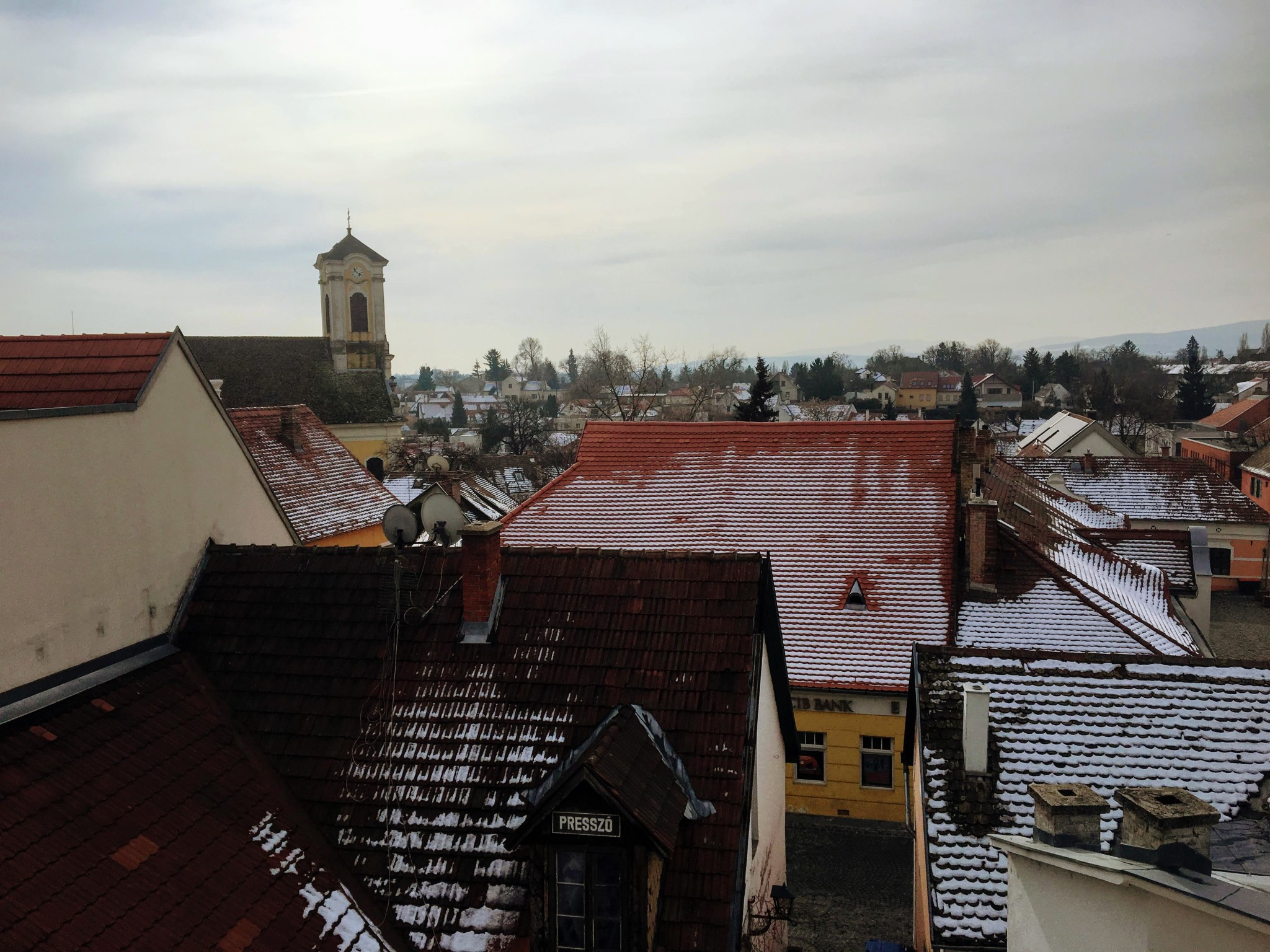 |
| It had snowed that week (as it does), so the vibe was definitely cozy and intimate. |
We started the day by walking and taking in the charming village, stopping at Blagovestenska Church, a Serbian Orthodox church. With Emese’s help translating, an old woman, the only soul in the building, told us a bit about the contrasts between the Serbian Orthodox and Eastern Orthodox traditions—she should know: she is the former while her husband is the latter. Gesturing towards the Christmas decorations still displayed in the nave, she told us that in the Serbian Orthodox church it’s traditional to have an oak tree, not an evergreen tree, as a Christmas decoration—so her family ends up getting two trees every year.
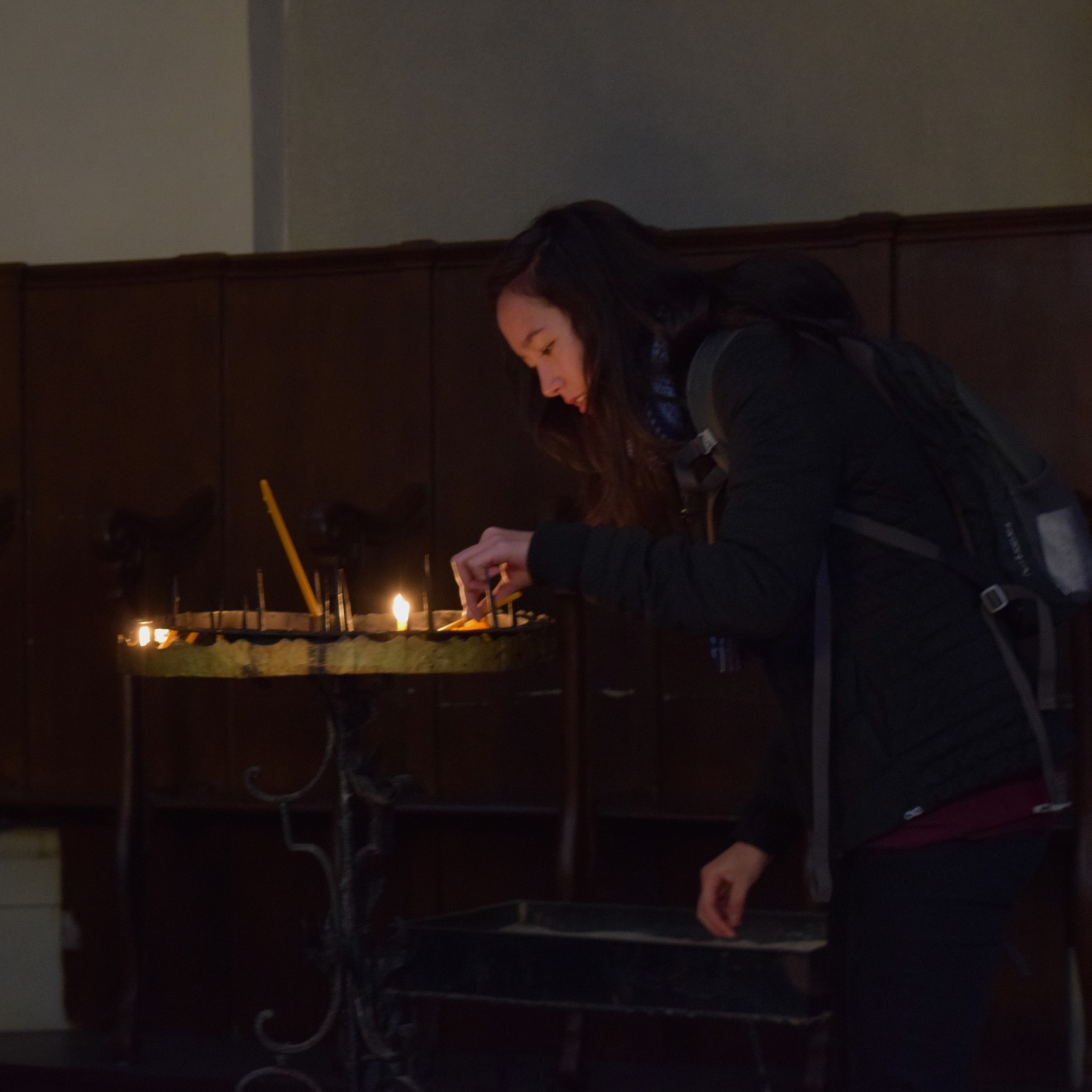 |
| I lit a candle in the church after giving a small donation. I figured better here, in a peaceful, quiet place than somewhere like the Vatican. (PC the incredible Lia Bozzone) |
We had some free time after lunch, during which Lia and I spent some quality time walking on the cobblestone streets and taking some nice photos.
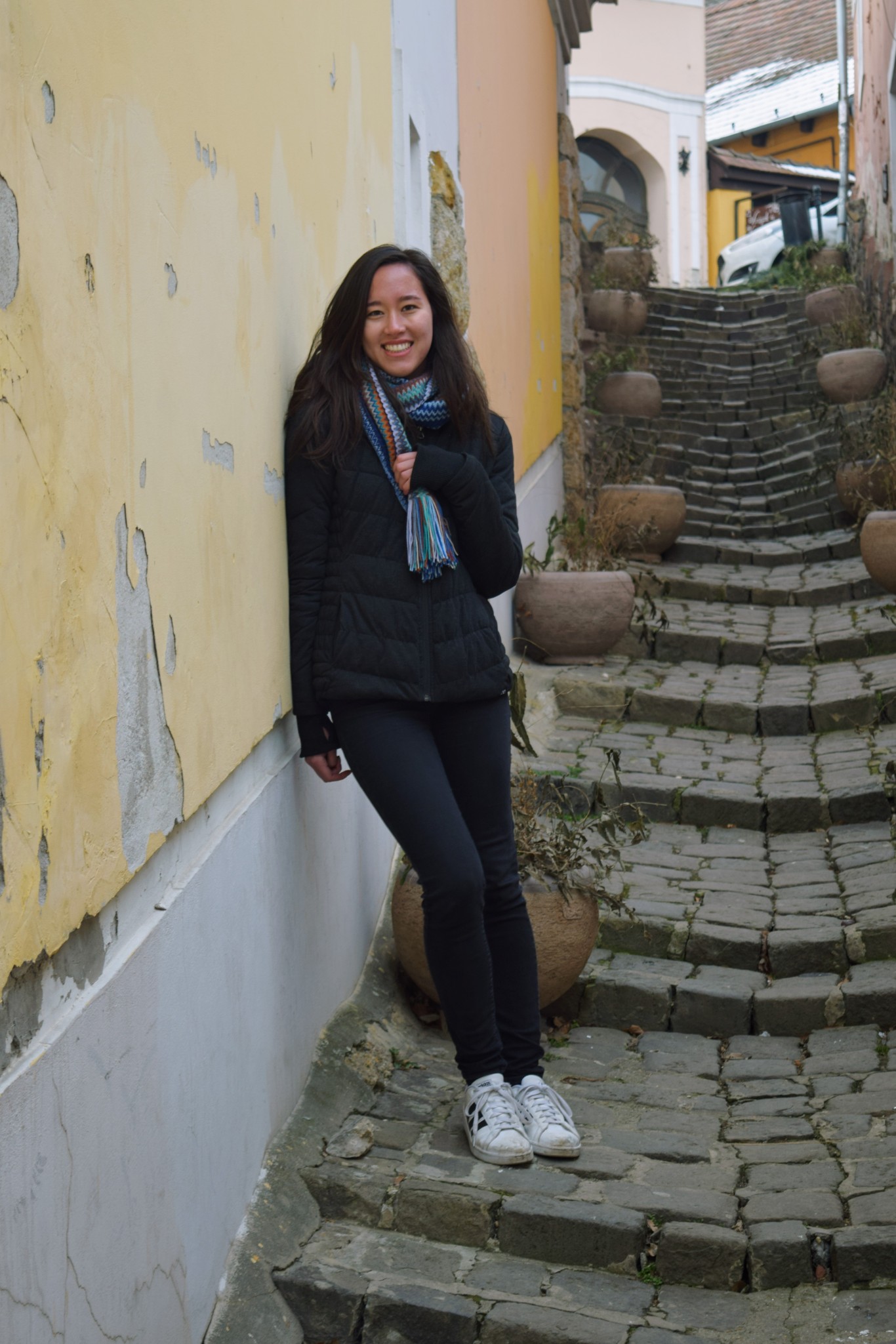 |
| Glamor shots! (Lia Bozzone) |
I didn’t understand why this trip was marketed as “the artist’s village” until after lunch. We visited two places that really highlighted the value of artistry and craftsmanship, meeting three women intensely passionate about things I would not have considered art before that day.
Our first stop was, of all things, a chocolate shop where the owner treated us to a tasting of “single origin chocolate” (and to some of the best hot chocolate I’ve ever had). She called her passion “coco culture,” which seemed a little silly at first, but upon putting the deep, rich chocolate on my tongue and tasting
actual floral notes, coco culture immediately rocketed its way past wine and cheese in my grand ranking of luxury-item culture.
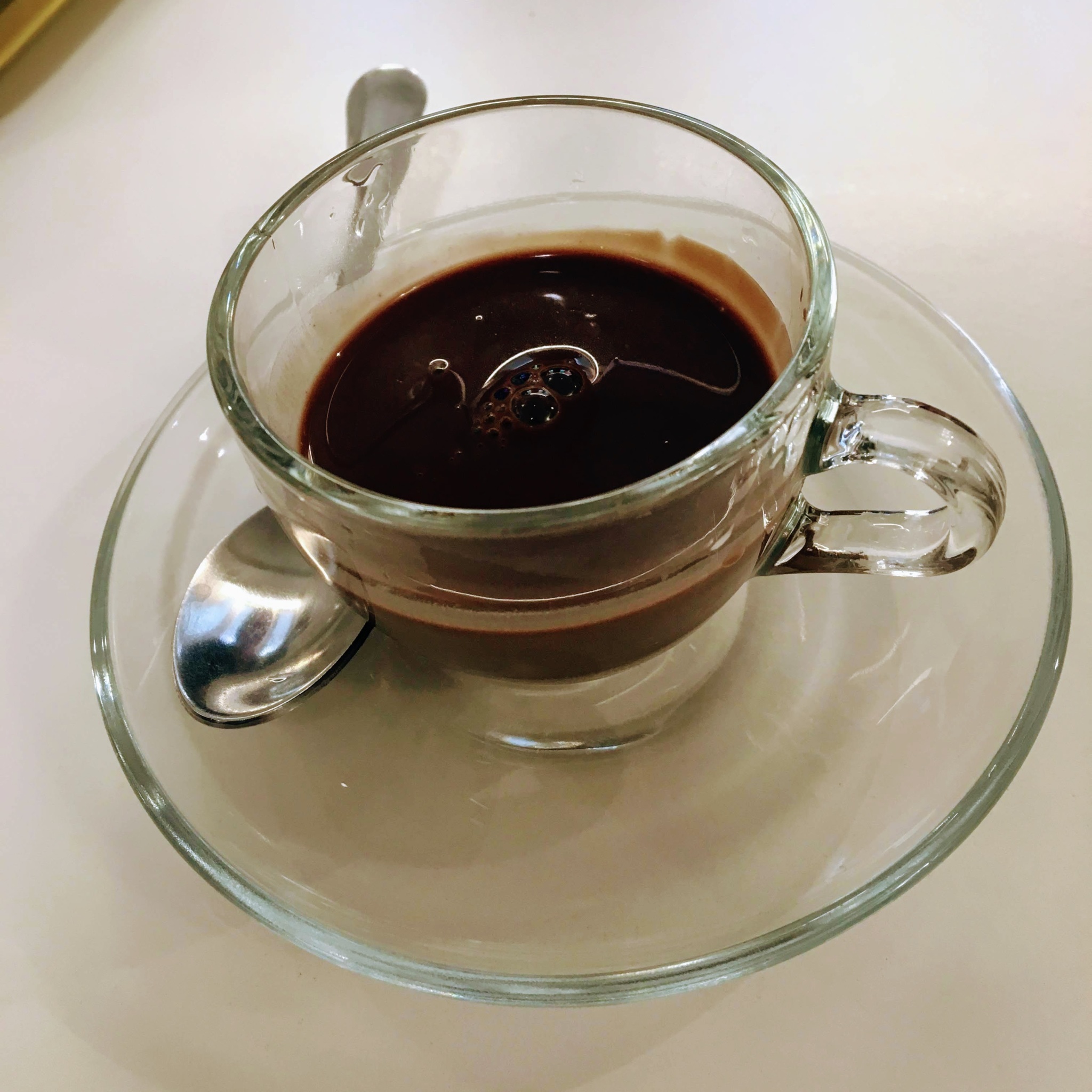 |
| Think hot chocolate, but richer and darker and thick like custard. I could probably drink enough of this stuff to become comatose. |
We also stopped by a traditional weaving shop, where a mother and a daughter were finishing a long shawl under the supervision of the head weaver, who spoke of weaving with a sparkle in her eyes. We saw her weave to finish the shawl for the mother and daughter, who had been there four hours that day. The head weaver wove like breathing, the shuttle moving back and forth between her hands like a heartbeat. When it was time to cut the strands and finish the shawl, Emese translated for us: “it’s hard to finally make the cut. Like seeing a child grow up.”
The highlight of the day, though, winding the cobblestone roads as the sun slowly set, was a small Hungarian folk art shop called Blue Land. The owner, Ilona a talkative and friendly woman with a lovely old dog, excitedly showed off the deep blue hand-printed clothes, the painted eggs from different regions of Hungary, the traditional Christmas ornaments made of recycled food items (dried orange peels, mushrooms, peppercorns, etc.) and corn husk dolls that Hungarian grandmothers immemorial had made for their granddaughters. Under Ilona’s watchful eyes and lilting English, each carefully-made item told a different story about the folk culture of the nation.
My friend Lia and I each bought a lucky charm there: a small baby doll nestled in a walnut shell, decked out in some of the beautiful royal-blue printed cloth. These lucky charms are meant to be gifts, and Ilona showed us the correct way to give them to someone else- from our right hand to the receiver’s left, to “complete the circle.”
Lia and I spent the rest of the day walking along the river of the town, and as evening set on the quiet day we remarked at how unabashedly beautiful it all was, and how we couldn’t wait to return.




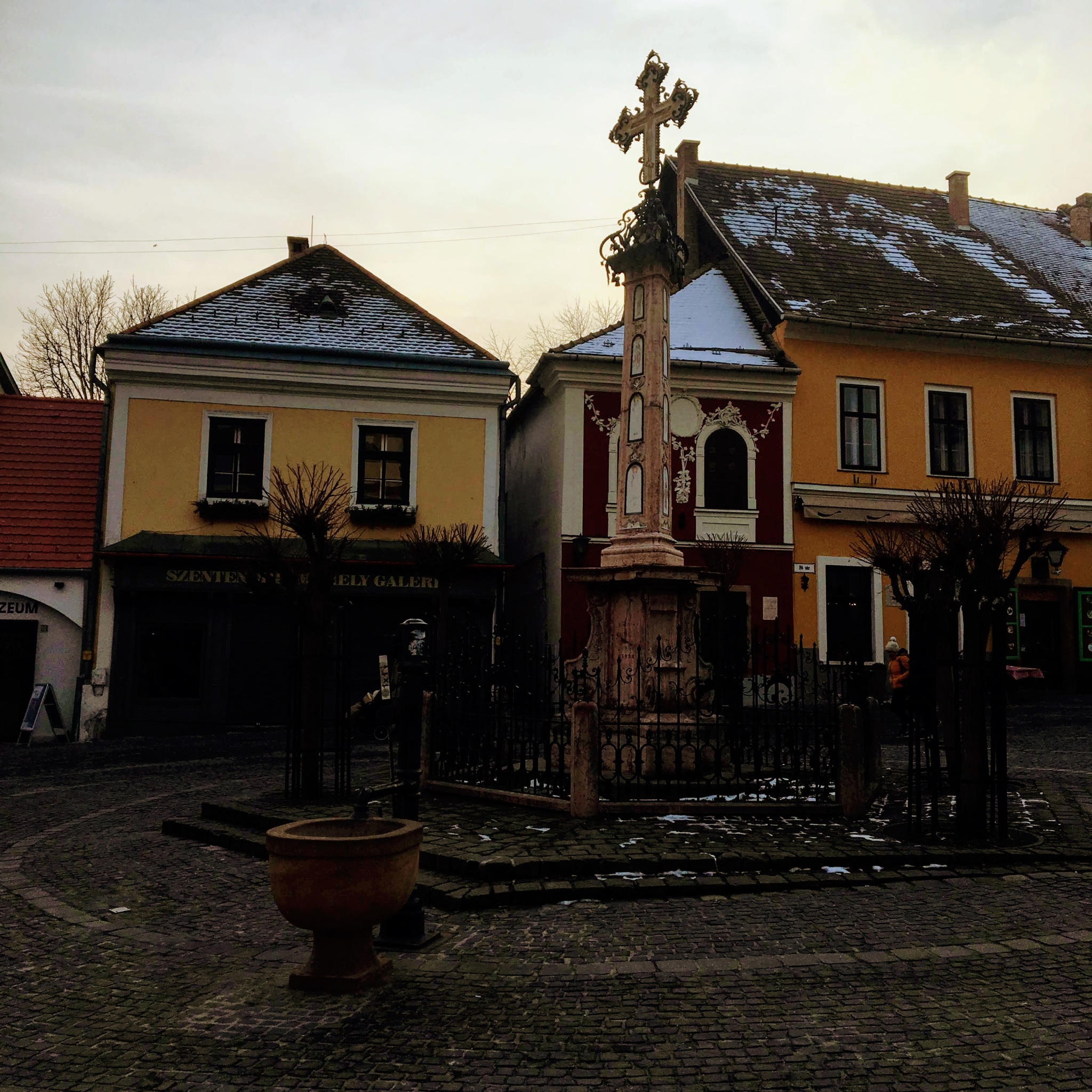
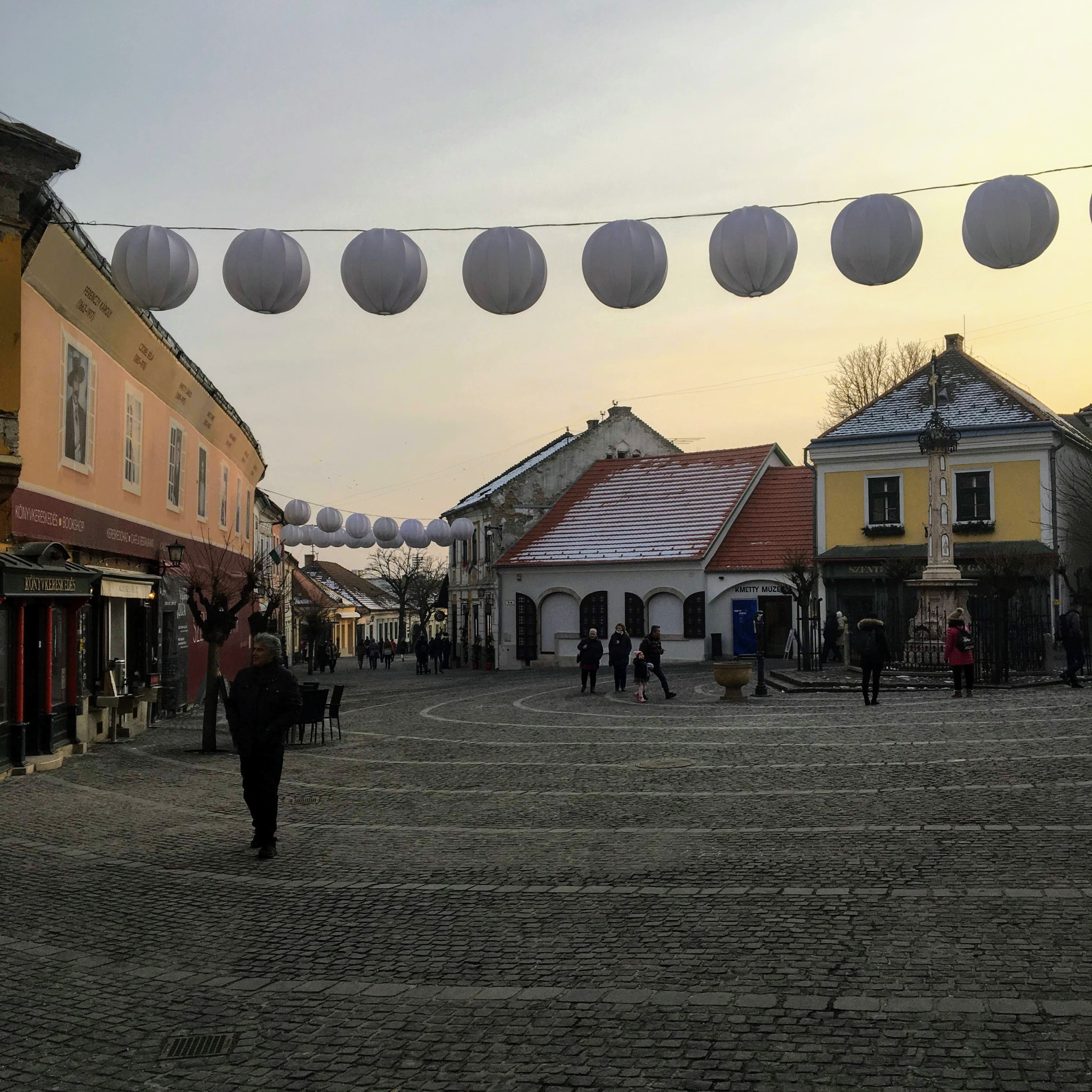
No comments:
Post a Comment